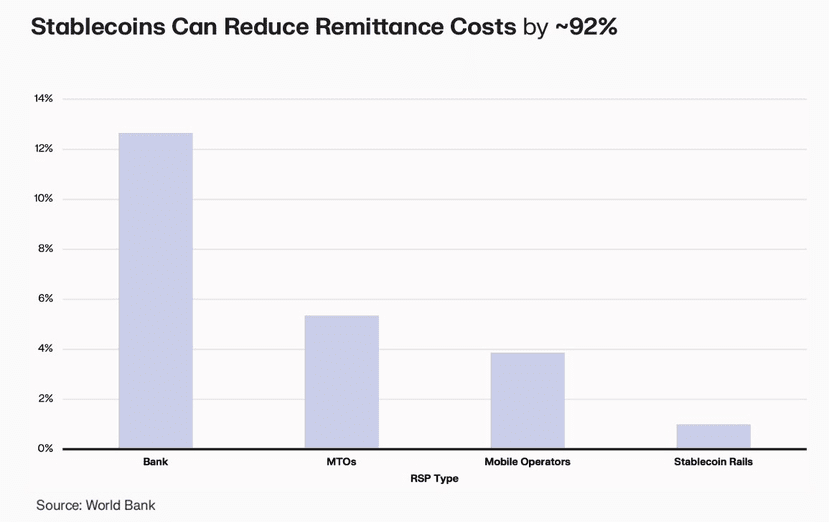The high fees associated with banks and money transfer companies are due to the presence of multiple intermediaries in the transfer process, such as correspondent banks, which leads to additional charges and delays in the arrival of funds. In contrast, stablecoins significantly reduce these costs by eliminating the need for these intermediaries.
* Banks: They charge the highest fees, which can reach up to 12.66% of the transferred amount. These fees often include transfer fees, foreign currency exchange fees, and fees from intermediary banks.
* Money transfer companies (MTOs): They charge lower fees than banks, but they are still relatively high, around 5.35%.
* Mobile telecom companies: They charge slightly lower fees, up to 3.87%.
* Stablecoins: Their fees are very low, typically limited to blockchain network fees, which can range from a few cents to just a few dollars, regardless of the transfer amount. This makes them a particularly attractive solution for cross-border money transfers.
How do stablecoins reduce fees?
Stablecoins rely on blockchain technology that enables direct peer-to-peer (P2P) financial transfers, removing the need for intermediaries like banks. This greatly reduces fees and increases transfer speed, as transactions occur in minutes or even seconds instead of days. Additionally, stablecoins do not impose extra fees on foreign currency exchanges as they are often pegged to the US dollar (USDT, USDC), eliminating currency conversion costs.
Follow me for more news on digital currencies.
#WalletConnect @Wallet Connect
@Daily Notcoin @Huma Finance 🟣 #HumaFinance @Lagrange Official

